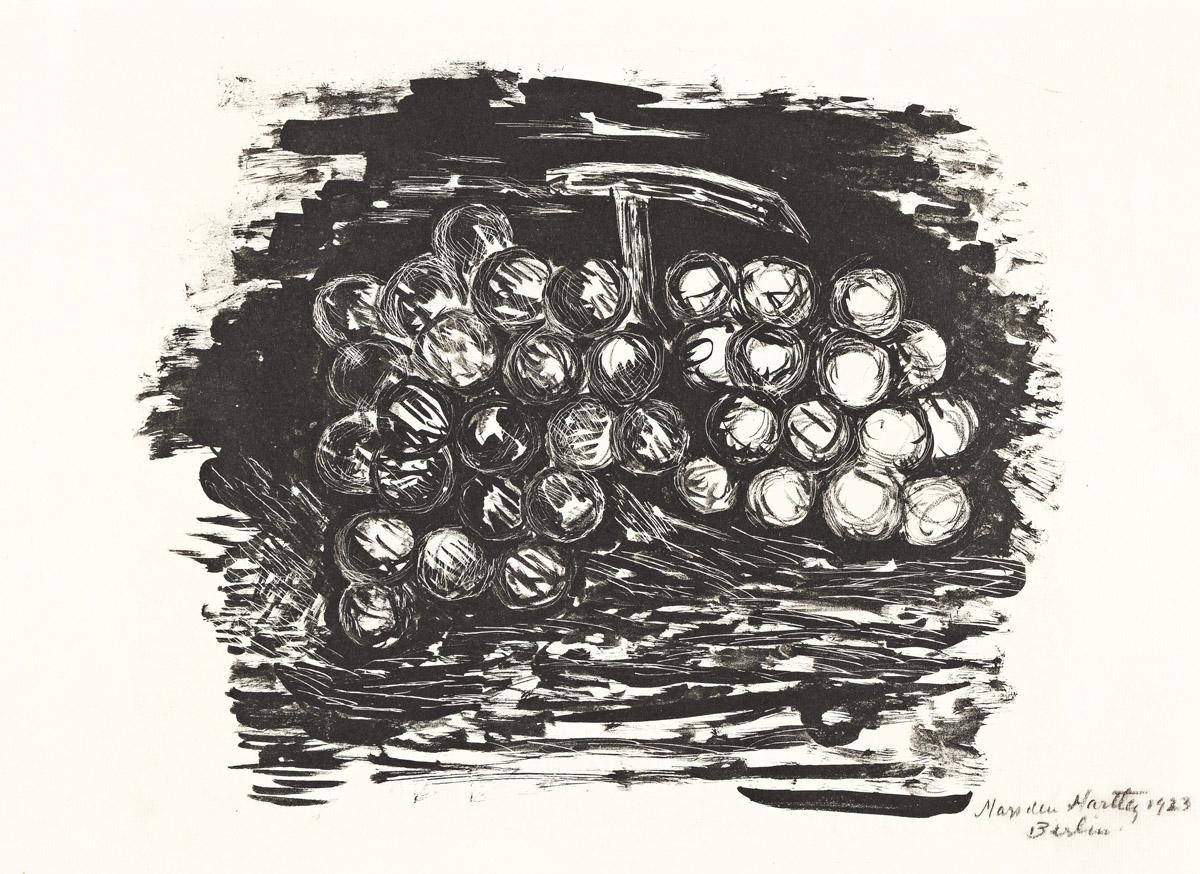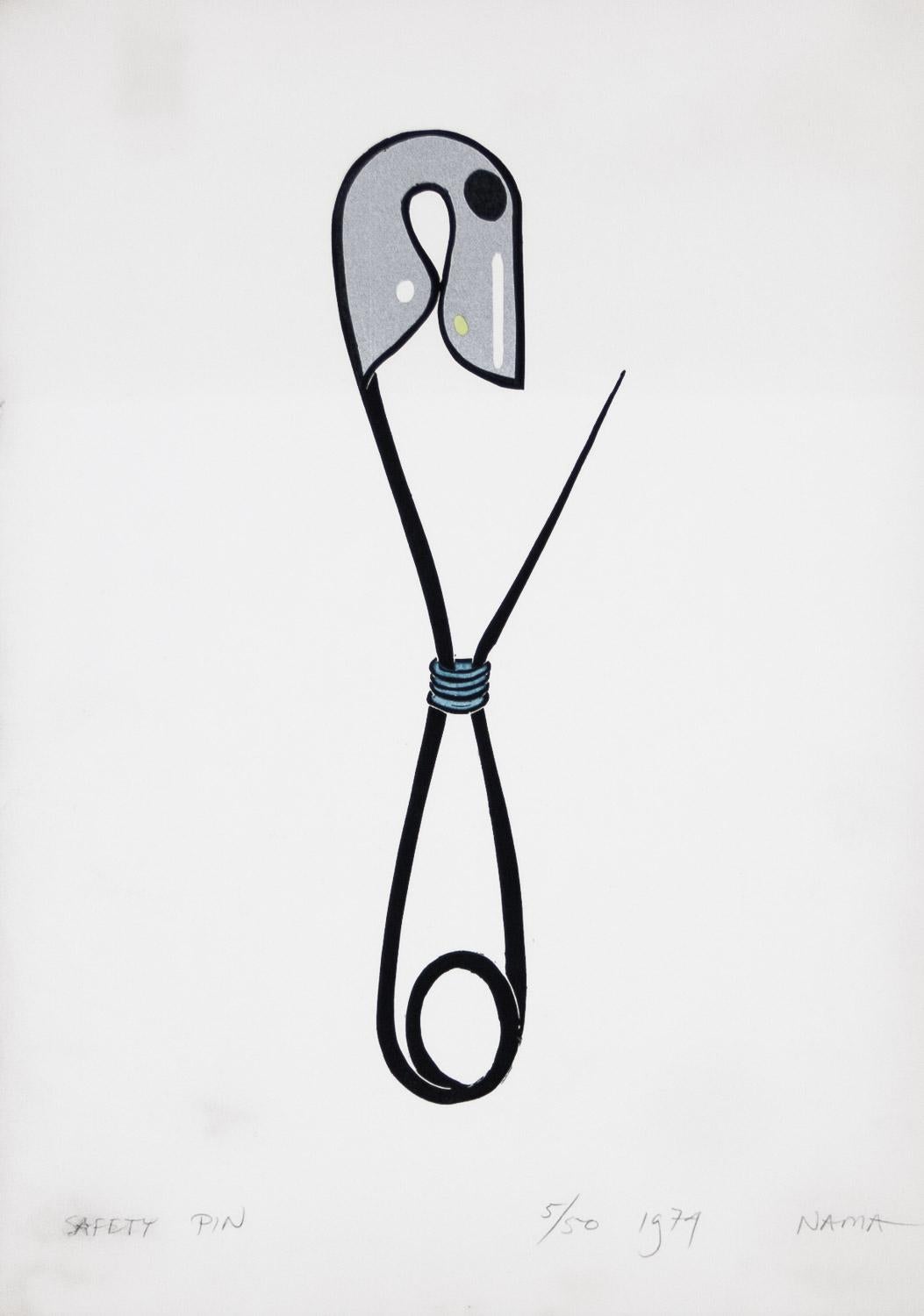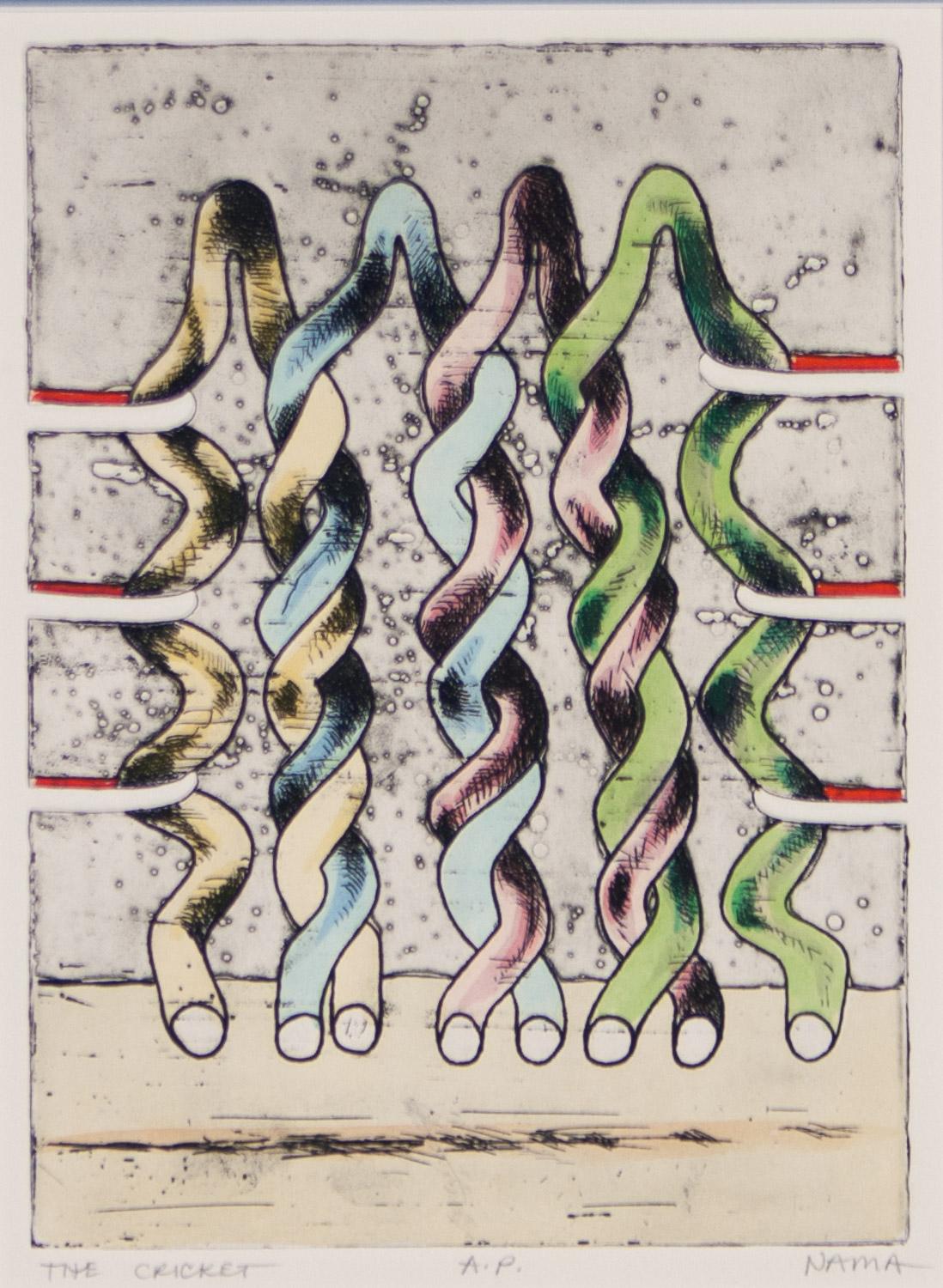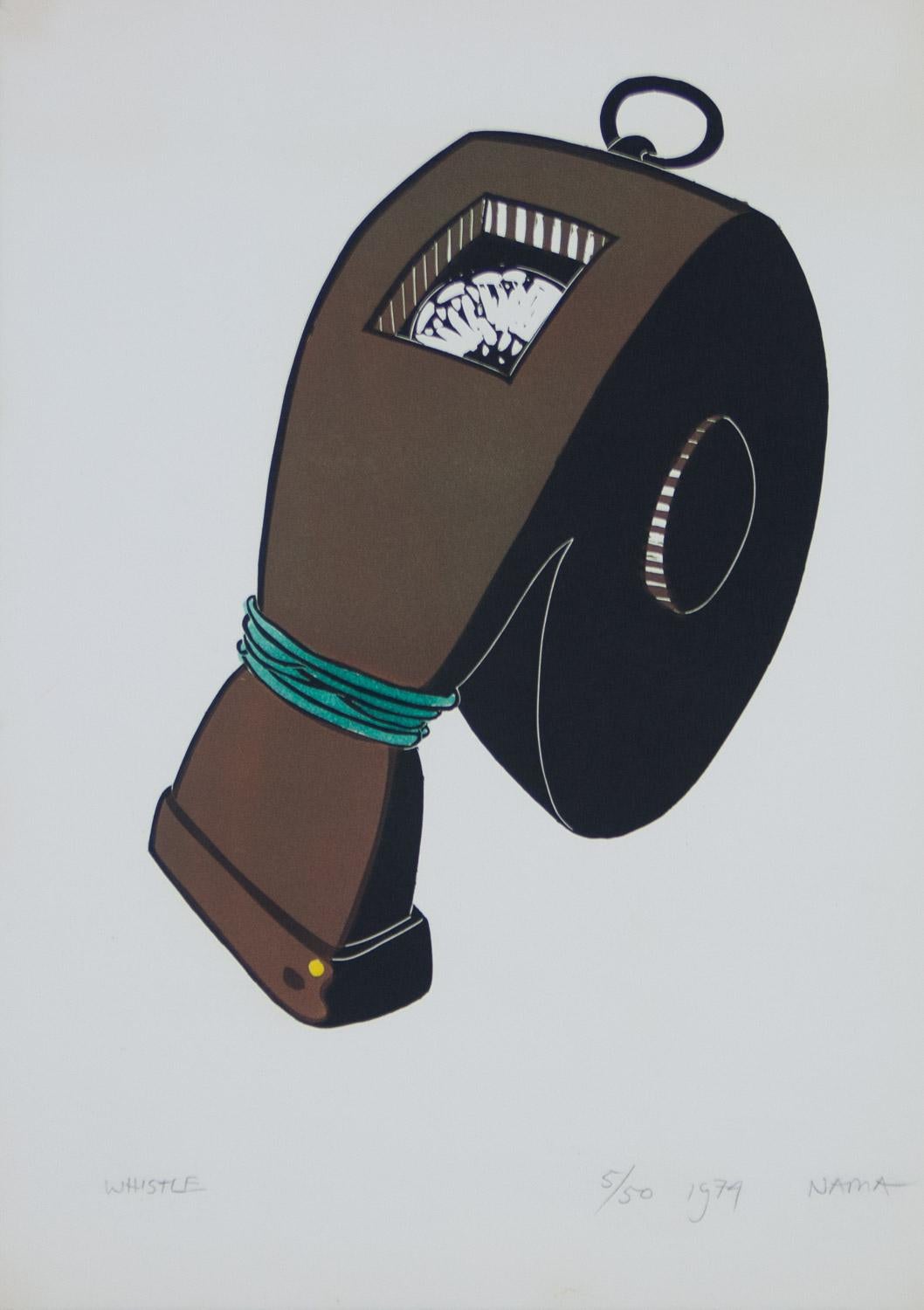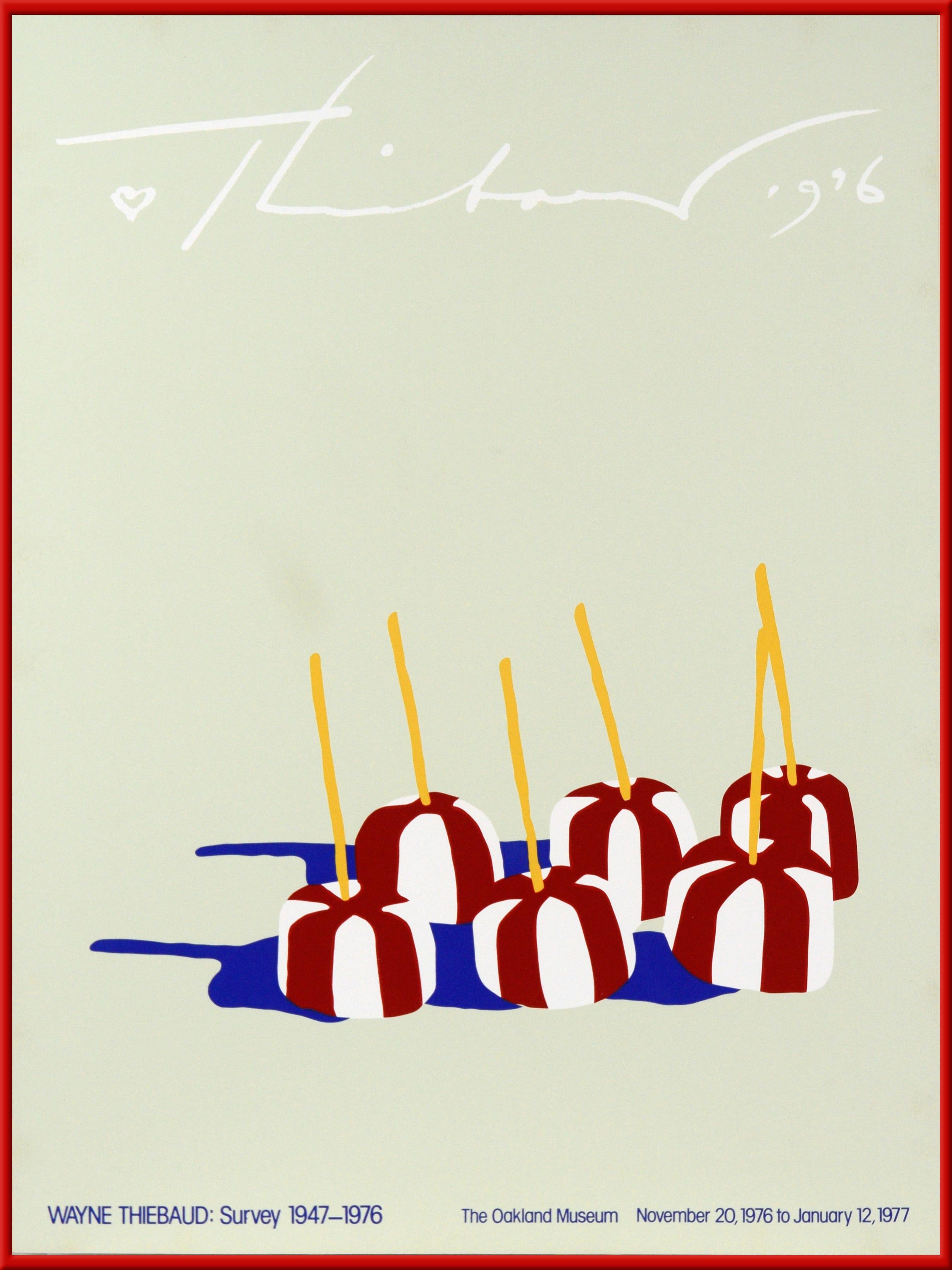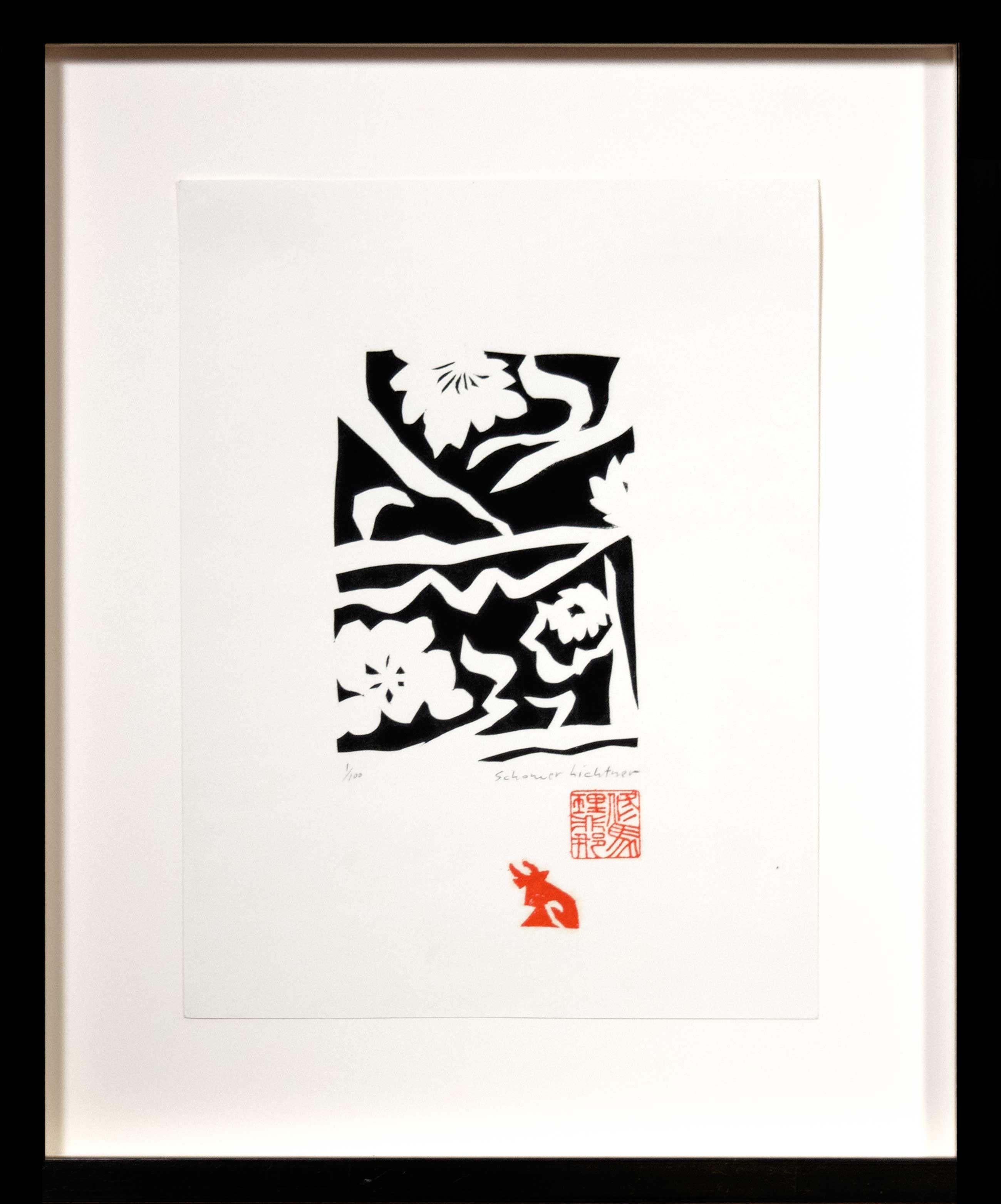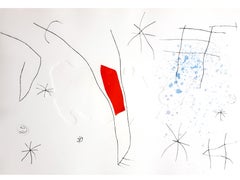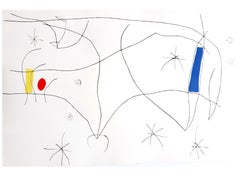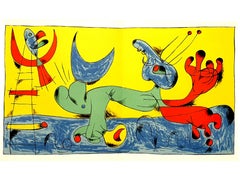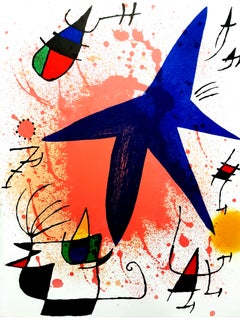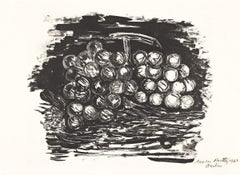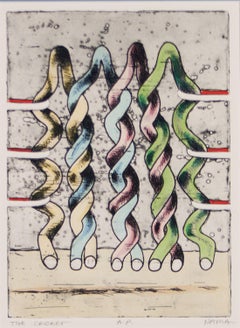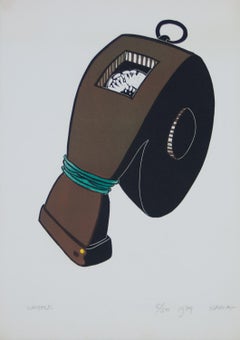Items Similar to After Pablo Picasso - The Basket
Want more images or videos?
Request additional images or videos from the seller
1 of 11
UnknownAfter Pablo Picasso - The Basket1920-1946
1920-1946
About the Item
With the printed signature of Picassp and date, as issued
Based on an original composition of 1920, printed in 1946
Picture Dimensions: 21 x 31 cm.
Sheet Dimensions: 31 x 41 cm
Printed in 1946 by Albert Carman
Pablo Picasso
Picasso is not just a man and his work. Picasso is always a legend, indeed almost a myth. In the public view he has long since been the personification of genius in modern art. Picasso is an idol, one of those rare creatures who act as crucibles in which the diverse and often chaotic phenomena of culture are focussed, who seem to body forth the artistic life of their age in one person. The same thing happens in politics, science, sport. And it happens in art.
Early life
Born in Malaga, Spain, in October of 1881, he was the first child born in the family. His father worked as an artist, and was also a professor at the school of fine arts; he also worked as a curator for the museum in Malaga. Pablo Picasso studied under his father for one year, then went to the Academy of Arts for one year, prior to moving to Paris. In 1901 he went to Paris, which he found as the ideal place to practice new styles, and experiment with a variety of art forms. It was during these initial visits, which he began his work in surrealism and cubism style, which he was the founder of, and created many distinct pieces which were influenced by these art forms.
Updates in style
During his stay in Paris, Pablo Picasso was constantly updating his style; he did work from the blue period, the rose period, African influenced style, to cubism, surrealism, and realism. Not only did he master these styles, he was a pioneer in each of these movements, and influenced the styles to follow throughout the 20th century, from the initial works he created. In addition to the styles he introduced to the art world, he also worked through the many different styles which appeared, while working in Paris. Not only did he continually improve his style, and the works he created, he is well known because of the fact that he had the ability to create in any style which was prominent during the time.
Russian ballet
In 1917, Pablo Picasso joined the Russian Ballet, which toured in Rome; during this time he met Olga Khoklova, who was a ballerina; the couple eventually wed in 1918, upon returning to Paris. The couple eventually separated in 1935; Olga came from nobility, and an upper class lifestyle, while Pablo Picasso led a bohemian lifestyle, which conflicted. Although the couple separated, they remained officially married, until Olga's death, in 1954. In addition to works he created of Olga, many of his later pieces also took a centralized focus on his two other love interests, Marie Theresa Walter and Dora Maar. Pablo Picasso remarried Jacqueline Roque in 1961; the couple remained married until his death 12 years later, in 1973.
Work as a pacifist
Pablo Picasso was a pacifist, and large scale paintings he created, showcased this cry for peace, and change during the time. A 1937 piece he created, after the German bombing of Guernica, was one such influential piece of the time. Not only did this become his most famous piece of art work, but the piece which showed the brutality of war, and death, also made him a prominent political figure of the time. To sell his work, and the message he believed in, art, politics, and eccentricity, were among his main selling points.
Conflicting with social views
Many things Pablo Picasso did during the 1950s, conflicted with the general public. Viciousness towards his children, exaggerated virility towards women, and joining the Communist party, were some of the many scandals which he was involved in during his lifetime. Although most of the things he did were viewed negatively by a minority of the general public, admirers of Pablo Picasso turned a blind eye, and still accepted him as a prominent figure in their society. Following the end of WWII, Pablo Picasso turned back towards his classic style of work, and he created the "Dove of Peace." Even though he became a member of the Communist party, and supported Stalin and his political views and rule, Pablo Picasso could do no wrong. In the eyes of his admirers and supporters, he was still a prominent figure, and one which they would follow, regardless of what wrongs he did. He was not only an influence because of the works he created, but he was also an influential figure in the political realm.
Influence outside of art
Although Pablo Picasso is mainly known for his influence to the art world, he was an extremely prominent figure during his time, and to the 20th century in general. He spread his influences to the art world, but also to many aspects of the cultural realm of life as well. He played several roles in film, where he always portrayed himself; he also followed a bohemian lifestyle, and seemed to take liberties as he chose, even during the later stages of his life. He even died in style, while hosting a dinner party in his home.
Collection of work
Pablo Picasso is recognized as the world's most prolific painter. His career spanned over a 78 year period, in which he created: 13,500 paintings, 100,000 prints and engravings, and 34,000 illustrations which were used in books. He also produced 300 sculptures and ceramic pieces during this expansive career. It is also estimated that over 350 pieces which he created during his career, have been stolen; this is a figure that is far higher than any other artist throughout history.
Sale of his works
Pablo Picasso has also sold more pieces, and his works have brought in higher profit margins, than any other artist of his time. His pieces rank among the most expensive art works to be created; with a price tag of $104 million, Garson a la Pipe, was sold in 2004.
Although he had a conflicting lifestyle, Pablo Picasso was admired by many, and was one of the most influential figures of his time. Not only during his life, but also after his death, he is still one of the most well known artists, and political figures, of his time. With thousands of pieces to his name, and art works which have been seen by millions, around the world, he has been a great influence to society, he has influenced the art world, and he introduced many new styles of art, which helped shape modern art, and modern styles artists follow today.
- Creation Year:1920-1946
- Dimensions:Height: 12.21 in (31 cm)Width: 16.15 in (41 cm)Depth: 0.04 in (1 mm)
- Medium:
- Movement & Style:
- Period:
- Condition:
- Gallery Location:Collonge Bellerive, Geneve, CH
- Reference Number:1stDibs: LU16121630263
About the Seller
4.9
Platinum Seller
Premium sellers with a 4.7+ rating and 24-hour response times
Established in 2015
1stDibs seller since 2015
952 sales on 1stDibs
Typical response time: <1 hour
- ShippingRetrieving quote...Shipping from: Collonge Bellerive, Geneve, Switzerland
- Return Policy
Authenticity Guarantee
In the unlikely event there’s an issue with an item’s authenticity, contact us within 1 year for a full refund. DetailsMoney-Back Guarantee
If your item is not as described, is damaged in transit, or does not arrive, contact us within 7 days for a full refund. Details24-Hour Cancellation
You have a 24-hour grace period in which to reconsider your purchase, with no questions asked.Vetted Professional Sellers
Our world-class sellers must adhere to strict standards for service and quality, maintaining the integrity of our listings.Price-Match Guarantee
If you find that a seller listed the same item for a lower price elsewhere, we’ll match it.Trusted Global Delivery
Our best-in-class carrier network provides specialized shipping options worldwide, including custom delivery.More From This Seller
View AllJoan Miro - a plate from L'Issue Dérobée
By Joan Miró
Located in Collonge Bellerive, Geneve, CH
Joan Miro - a plate from L'Issue Dérobée
Etching, aquatint and drypoint in colors
1974
Dimensions: 36 x 54 cm
Edition: 220
Jacques Dupin, L'Issue Dérobée, Maeght Editeur, Paris, 19...
Category
1970s Modern Abstract Prints
Materials
Lithograph
$1,791 Sale Price
30% Off
Joan Miro - L'Issue Dérobée - Original Aquatint
By Joan Miró
Located in Collonge Bellerive, Geneve, CH
Joan Miro - L'Issue Dérobée - Original Aquatint
1974
Dimensions: 36 x 54 cm
Edition: 220
Jacques Dupin, L'Issue Dérobée, Maeght Editeur, Paris, 1974 (C. books 187)
Biography
Joa...
Category
1970s Modern Abstract Prints
Materials
Lithograph
$1,791 Sale Price
30% Off
Joan Miro - Playing Dog - Lithograph in Colors
By Joan Miró
Located in Collonge Bellerive, Geneve, CH
Joan Miro - Playing Dog - Lithograph in Colors
Artist: Joan Miro
Composition 7 for the book “Joan Miro” by Jacques Prevert
Editor: Maeght
Year: 1956
Dimensions: 23 x 38 cm
Reference:...
Category
1950s Abstract Abstract Prints
Materials
Lithograph
Joan Miro - Original Abstract Lithograph
By Joan Miró
Located in Collonge Bellerive, Geneve, CH
Joan Miro Miro Original Abstract Lithograph
Artist: Joan Miro
Medium: Original lithograph on Rives vellum
Portfolio: Miro Lithographe V
Year: 1981
E...
Category
1970s Abstract Abstract Prints
Materials
Lithograph
Joan Miro - Original Abstract Lithograph
By Joan Miró
Located in Collonge Bellerive, Geneve, CH
Joan Miro Miro Original Abstract Lithograph
Artist: Joan Miro
Medium: Original lithograph on Rives vellum
Portfolio: Miro Lithographe IV
Year: 1981
Edition: 5,000
Image Size: 10" x 1...
Category
1970s Abstract Abstract Prints
Materials
Lithograph
Joan Miro - Original Abstract Lithograph
By Joan Miró
Located in Collonge Bellerive, Geneve, CH
Joan Miro Miro Original Abstract Lithograph
Artist: Joan Miro
Medium: Original lithograph on Rives vellum
Portfolio: Miro Lithographe IV
Year: 1981
Edition: 150
Image Size: 10" x 13"...
Category
1970s Abstract Abstract Prints
Materials
Lithograph
You May Also Like
Grapes
By Marsden Hartley
Located in New York, NY
A superb, richly-inked impression of this early, very scarce lithograph. Signed and dated in pencil, lower right.
Category
1920s American Modern Still-life Prints
Materials
Lithograph
Safety Pin from George Nama's suite " Tight Rope " 1974
By George Nama
Located in Paonia, CO
Safety Pin by American artist George Nama is from ” Tightrope ” a suite of ten lino-cuts published by Monument Press 1974. We see a stark image of a large safety pin with a wire binding it’s movement which changes the viewers concept of what they think they are perceiving. In this series of ten lino-cuts Nama takes ordinary household objects and makes them inoperable by wrapping a wire around the workable part of the object and presenting one object at a time. There seems to be a sense of humor and at the same time profundity with each image. All copies are individually signed and numbered by the artist. This is copy number 5/50 and is touched by hand with watercolor on Arches cover stock paper and printed by Monument Press in Pittsburgh, Pennsylvania. This print is in excellent condition with the first two letters of the title having been smudged by the artist when he hand wrote it in pencil on the lower left side of the print.
George Allen Nama was born in Homestead near Pittsbugh, Pennsylvania in 1939. In the 1960’s he was part of an international artistic circle in Paris while working at the Atelier 17 with William Stanley Hayter...
Category
1970s American Modern Still-life Prints
Materials
Linocut
The Cricket hand painted etching by George Nama 1978
By George Nama
Located in Paonia, CO
The Cricket is a hand painted etching by American artist George Nama edition A. P. hand signed and titled in pencil by the artist. Believed to be from a collection of 9 etchings from the suite titled "The Origin of Language." This etching is raised at the six horizontal red lines and is touched by hand with watercolor in green, pink, white and red colors. It is in excellent condition.
George Allen Nama was born in Homestead near Pittsbugh, Pennsylvania in 1939. In the 1960’s he was part of an international artistic circle in Paris while working at the Atelier 17 with William Stanley...
Category
1970s American Modern Abstract Prints
Materials
Etching
$680 Sale Price
20% Off
Whistle lino-cut from George Nama suite Tight Rope 1974
By George Nama
Located in Paonia, CO
Whistle by American artist George Nama is from ” Tightrope ” a suite of ten lino-cuts published by Monument Press 1974. We see a stark image of a large whistle with a wire binding it’s movement which changes the viewers concept of what they think they are perceiving. In this series of ten lino-cuts Nama takes ordinary household objects and makes them inoperable by wrapping a wire around the workable part of the object and presenting one object at a time. There seems to be a sense of humor and at the same time profundity with each image. All copies are individually signed and numbered by the artist. This is copy number 5/50 and is touched by hand with watercolor on Arches cover stock paper and printed by Monument Press in Pittsburgh, Pennsylvania. This print is in excellent condition.
George Allen Nama was born in Homestead near Pittsbugh, Pennsylvania in 1939. In the 1960’s he was part of an international artistic circle in Paris while working at the Atelier 17 with William Stanley Hayter...
Category
1970s American Modern Still-life Prints
Materials
Linocut
$600 Sale Price
20% Off
"Wayne Thiebaud: Survey 1947-1976" Oakland Museum Show Poster
By (After) Wayne Thiebaud
Located in Soquel, CA
"Wayne Thiebaud: Survey 1947-1976" Show Poster from the Oakland Museum 1976-1977
Silkscreen poster from the Oakland Museum 1976-1977 show "Wayne Thiebaud: Survey 1947-1976" with a printing of an original drawing (Six Candied Apples...
Category
1970s American Modern Abstract Prints
Materials
Paper, Screen
$740 Sale Price
20% Off
'Flowers' original abstract linocut by Wisconsin artist Schomer Lichtner
By Schomer Lichtner
Located in Milwaukee, WI
'Flowers' is an original linocut by Wisconsin-based artist Schomer Lichtner. The composition presents a scattered floral still life amongst abstracted shadows and forms, rendered with Lichtner's quintessential abstract sensibilities. This print is one from a series that each depict abstracted subjects in black silhouette, taking pleasure in the materiality of the linocut technique. The free forms of the flower resemble the lyrical mid-century works of the French artist Henri Matisse, which combined with these material concerns demonstrate Lichter's modern sensibilities. The prints from this series are unusual because of how below the image, Lichtner also includes his Chinese seal and a linocut remarque of a cow, each of which act as an additional signature of the artist on the artwork.
Linocut in black and red on Permalife white wove paper
4 x 5.25 inches, image
11.5 x 8.75 inches, sheet
16.5 x 13.63 inches, frame
Signed in pencil, below image, lower right.
Edition 1/100 in pencil, below image, lower left.
Chinese signature stamp in red, below image, lower right.
Remaque of a cow in red, below image, lower right.
Permalife watermark to paper.
Framed to conservation standards in a shadow-box style mounting, using 100 percent rag matting, museum glass, and housed in a silver-finish wood moulding.
Overall excellent condition with no creases or discoloration.
Milwaukee artist Schomer Lichtner was well known for his whimsical cows and ballerinas and abstract imagery. He and his late wife Ruth Grotenrath, both well-known Wisconsin artists, began their prolific careers as muralists for WPA projects, primarily post offices.
Lichtner also painted murals for industry and private clients. Schomer was a printmaker and produced block prints, lithographs, and serigraph prints. His casein (paint made from dairy products) and acrylic paintings are of the rural Wisconsin landscape and farm animals. He became interested in cows when he and Ruth spent summers near Holy Hill in Washington County. According to David Gordon, director of the Milwaukee Art Museum, Schomer Lichtner had a tremendous joie de vivre and expressed it in his art.
Schomer Lichtner was nationally known for his whimsical paintings and sculptures of black- and white-patterned Holstein cows...
Category
Late 20th Century American Modern Abstract Prints
Materials
Paper, Black and White, Linocut
Recently Viewed
View AllMore Ways To Browse
The Name Of The Rose
The End Of Dinner
After Picasso Ceramic
The Party Ceramic
1950s Abstract Ceramic Sculpture
Antique American History Books
Antique Spanish Baskets
Antique Idols
Antique African Baskets
Antique Crucible
Carolina Iturrospe
Cartier Saint Honore
Cecile Mersch
Charles M Russell Will Rogers Bronze
Charna Rickey On Sale
Charo Oquet
Chiara Dynys
Chloe Rizzo
